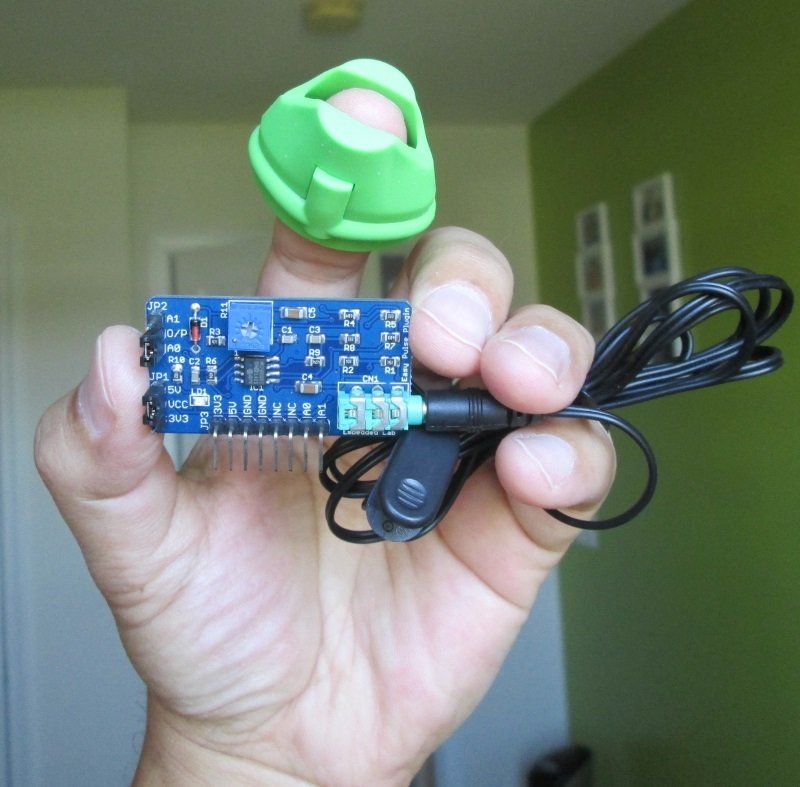Chances are pretty good you’ve had a glowing probe clipped to your fingertip or earlobe in some clinic or doctor’s office. If you have, then you’re familiar with pulse oximetry, a cheap and non-invasive test that’s intended to measure how much oxygen your blood is carrying, with the bonus of an accurate count of your pulse rate. You can run down to the local drug store or big box and get a fingertip pulse oximeter for about $25USD, but if you want to learn more about photoplethysmography (PPG), [Rajendra Bhatt]’s open-source pulse oximeter might be a better choice.
PPG is based on the fact that oxygenated and deoxygenated hemoglobin have different optical characteristics. A simple probe with an LED floods your fingertip with IR light, and a photodiode reads the amount of light reflected by the hemoglobin. [Rajendra]’s Easy Pulse Plugin receives and amplifies the signal from the probe and sends it to a header, suitable for Arduino consumption. What you do with the signal from there is up to you – light an LED in time with your heartbeat, plot oxygen saturation as a function of time, or drive a display to show the current pulse and saturation.
We’ve seen some pretty slick DIY pulse oximeters before, and some with a decidedly home-brew feel, but this seems like a good balance between sophisticated design and open source hackability. And don’t forget that IR LEDs can be used for other non-invasive diagnostics too.





















These are great, but the question is: how do you calibrate them? With a commercial pulseox reader?
With progressively oxygenated “phantom” samples and a bunch of blatant assumptions about usage profiles, skin colour, peripheral perfusion, alveolar:capillary:Venule volume ratios, harmoglobin types concentrations and ratios, and eventually just shining your light through diluted blood while measuring the dissolved and bound gasses using a blood gas machine.
Or use lasers.
Actually…is this pulse oximetry? I thought that meant that you were getting oxygen levels…this just seems to give pulse info.
This is not a pulse oximeter, but just a PPG pulse measuring device. It clears states so in the article that you have linked…
Have you guys even read the article? This is *NOT* an oximeter, just a pulse measuring device. Not that novel, not that interesting. Come on HAD, you can do better.
I have a disposable sensor setup for a past hospital visit and it uses two different ‘color’ LEDs and one detector to do the measurements.
And pulse oximeters are notoriously inaccurate, so much so that the nurses at work only use them to see if you are trending towards oxy deprivation or saturation.
do you think that nonin pulse oximeter is best one for peoples like me who suffer from lung disease , after i read this review therateinc.com/health/best-pulse-oximeter-reviews , i found that nonin is best choice . do you agree with me ? and is amazon the best place to buy it with cheap price
Actual oximeters that use Red and IR require calibration specific to the entire optical stack. Any medical grade device is +/-3%, assuming skin on the mid to light side. There is an open FDA corrective inquiry about their accuracy on darker skin people.
The low cost ones are probably not calibrated, or only accurate with ~5%, but it is hard to know because there are few standards for them unless they got a regulatory approval in another country.
There are some techniques in development that may not require calibration, but do require laser sources with closer wavelength differences that are currently impractical.